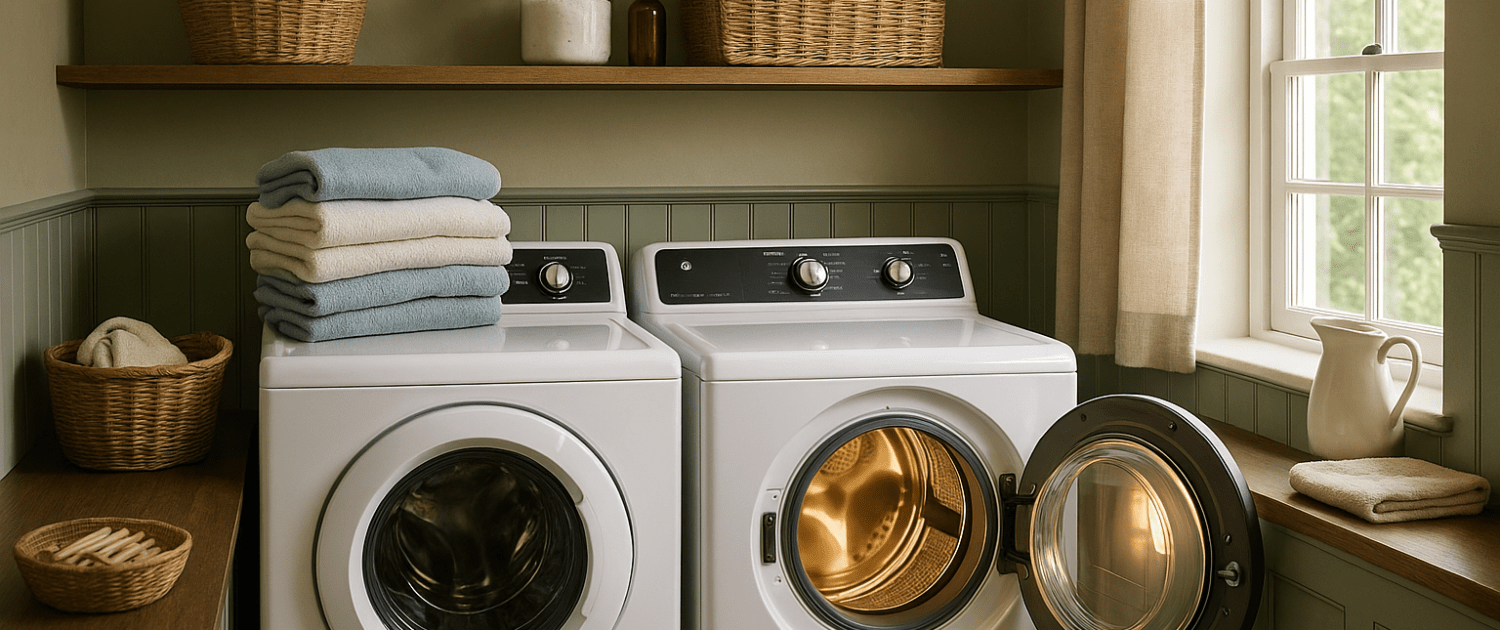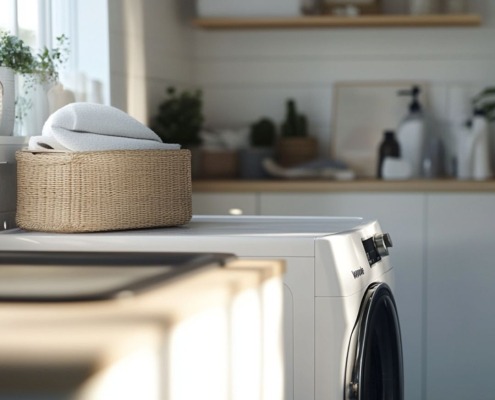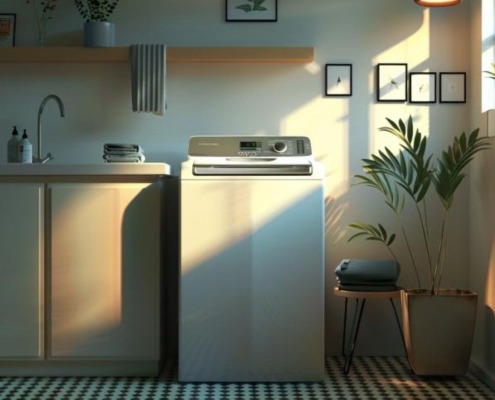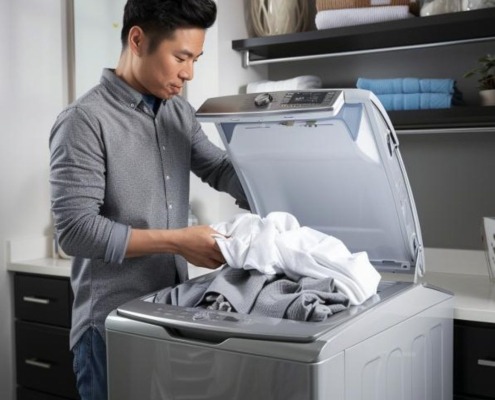Why Your Whirlpool Top Load Washer Won’t Start and How To Fix It
Steven E / Thursday June 5, 2025
Struggling with a Whirlpool top-load washer that won’t start its cycle? Don’t worry, we’re here to help you pinpoint the issue and get it running again without needing to call a pro.
If you need any replacement parts for your Whirlpool top load washer, you can enter your model number at AppliancePartsPros.com to order them. Most orders arrive in just two business days, and we have thousands of free guides to show you how to install your new parts.
The information in this article may not apply to your specific appliance model. We recommend consulting your manufacturer’s documentation or contact us with any questions.
Materials you need
- Phillips head screwdriver
- Putty knife
- Multimeter
Safety precautions
Your safety should always be the top priority when performing any appliance repair.
- Always power off and unplug your appliance or switch off the circuit breaker before you attempt any maintenance or replacement work. This keeps you safe by eliminating any risk of electric shock.
- If the appliance has recently been used, give it plenty of time to cool down before working on it.
- Take your time while working to prevent accidents and personal injuries. Rushing is the enemy of precision.
- Work in a well-lit area so you can see and access appliance parts.
- Keep your workspace free of clutter and other obstacles. Keep children and pets away from the work area.
- Never work on internal parts with wet hands. Make sure the work area is completely dry.
- Check the user manual to see if there are specific installation or safety instructions related to your appliance or replacement part.
- Be gentle when handling or removing parts. Excessive force might damage the appliance or cause personal injury.
- Wear insulated work gloves to protect your hands from sharp metal parts and debris.
- When working with wires, avoid touching any exposed wires or terminals. If you need to touch a wire, use a non-conductive tool or wear insulating gloves to prevent electrical shock.
- Always take photos or make a note of wiring terminals or other connections before disconnecting them to make reassembly easier.
- Don’t test live voltage with a multimeter if you’re unfamiliar with how to prevent short-circuiting.
- Consider wearing safety glasses and/or a dust mask when working with chemicals, dust or a large amount of debris to prevent irritation or injury.
- Turn off the water supply at the outlet before beginning repairs. Keep towels ready to catch any residual water in the system when removing parts.
How to troubleshoot a Whirlpool top load washer that won’t start
LIVE VOLTAGE WARNING: For this test, the washer needs to be plugged in and powered on. Please be very careful to protect yourself from electric shock, which has the potential to cause serious injuries. Don’t ever test live voltage if you’re uncomfortable using a multimeter.
- Turn off the washer by unplugging it or switching off the circuit breaker.
- Pull the washer out and remove the rear panel over the control panel by unscrewing the fasteners.
- Use a putty knife to release the spring clips at the front corners of the control panel.
- Roll the control panel upward and remove it to access the main control board and wiring.
- Check that the J18 and J17 connectors are fully seated on the main control board and user interface.
- Plug the washer back in and set a multimeter to DC voltage.
- Measure voltage between J18 pin 3 (black probe) and J18 pin 1 (red probe) for 5 VDC.
- Replace the main control board if 5 VDC is not detected.
- Test the continuity of the user interface harness using a multimeter.
- Check continuity between J18 pin 1 and J17 pin 3, J18 pin 2 and J17 pin 2, and J18 pin 3 and J17 pin 1.
- Replace the user interface harness if there is no continuity.
- Replace the user interface if continuity is present.
Test the main control board
- Test for 120 VAC at the J12 connector (black and white wires) on the main control board.
- Replace the power cord if 120 VAC is not present.
- Check the diagnostic LED on the main control board for status.
- Replace the main control board if the LED is steady on.
- Disconnect power and remove the J18 connector from the control board.
- Plug the washer back in and check the diagnostic LED again.
- Test the keypad and encoder if the LED flashes.
- Measure the voltage between J18 pin 3 and J18 pin 1 for 5 VDC if the LED is not flashing.
- Replace the main control board if 5 VDC is not detected.
- Replace the main control board if 5 VDC is present, but the LED still isn’t flashing.
Test the lid lock
- Inspect the lid lock for errors and obstructions if the user interface and main control board are functioning.
- Check for error codes F5E1, F5E2, F5E3, or F5E4 to identify lid lock issues.
- Verify the J6 connector is fully seated on the main control board.
- Reseat the J6 connector if necessary and retest the lid lock.
- Measure DC voltage between J6 pin 7 and J18 pin 3 with the power on.
- Replace the main control board if the voltage is greater than 1 VDC.
- Measure AC voltage between J6 pin two and J12 pin 3.
- Reposition the multimeter leads for accurate contact if the voltage is not detected.
Test the service diagnostics
- Activate service diagnostics mode by selecting any three buttons (excluding power) and pressing them in sequence three times within eight seconds.
- Verify all console indicators illuminate and the display shows “888.”
- Press and release the second selected button to enter test mode.
- Use the soil level and temperature buttons to navigate to function 000 for door lock testing.
- Use the start button to toggle the function on and off.
- Monitor voltage changes during door lock testing and look for a spike.
- Replace the lock mechanism if the latch does not move and an F5E2 error code is displayed.
- Use a folded piece of cardboard to block the latch and repeat the voltage spike test.
- Replace the control board if no voltage spikes are detected.
- Reassemble the washer and test for proper operation after replacing any faulty components.
Additional information
Thank you for reading! We hope this guide helped you get your Whirlpool top load washer working again.
If you have any other appliance repair needs or projects, don’t hesitate to explore our other troubleshooting guides and videos.
If you need replacement parts or some extra help with ordering them, grab your model number and head over to AppliancePartsPros.com, where you can chat with a pro, read our DIY blog and more.
Don’t forget to subscribe to us on YouTube and follow us on Facebook, Twitter and Instagram!
With nearly a decade of experience in providing top-notch customer service regarding appliance parts and repair, Steven enjoys sharing practical advice, troubleshooting tips, and interesting information to help readers stay informed.





